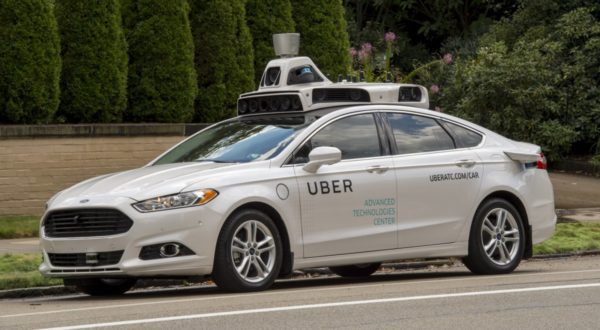
Photo credit: businessinsider.com
I read with interest The New York Times article published yesterday on The Future Of Retirement Communities: Walkable and Urban. It pointed out that even though most of us currently drive everywhere, more older people these days are looking for a community where they can enjoy a full life without a car. Aging in place now means a lot more than your home – it’s more like aging in community where people can walk or take transit to just about everything they need in an urban neighbourhood.
According to the publication, retirement communities in the U.S. have been slow to change in the age of the Fitbit and a growing cohort of active, engaged retirees eager to take their daily 10,000 steps. Eighty percent of retirees still live in car-dependent suburbs and rural areas, according to a Brookings Institution study. The study indicated that developments for independent retirees typically come in two flavours: isolated, gated subdivisions or large homes on golf courses, often in the same bland package of multiple cul-de-sacs. Both require driving everywhere, which is a problem for those who either do not want to drive or cannot.
The future of independent aging lies more in the walkable urban space – from existing neighbourhoods in places like Brooklyn or San Francisco, to newly built housing within city and suburban cores from coast to coast. In the U.S., new senior housing projects are being built with the goal of keeping retirees active and enabling them to get out and walk to basic services. Researchers found that walkable, mixed-use environments could possibly reduce disabilities many face as they age. Pedestrian-friendly communities promote walking to a grocery store, cafe or other services like a dry cleaner or library.
However, many developers pointed out that urban retirement communities are difficult to build within cities which require extensive infrastructure improvements, including wider sidewalks, bike lanes, more public transportation options and longer pedestrian signal walk times. There is also the question of affordability – walkable areas in mature cities may be unaffordable for retirees who are interested in reducing their overall housing costs. According to Walkscore.com, some of the most walkable U.S. cities, such as New York, San Francisco and Boston, are also the most expensive. Canadian retirees face the same conundrum as their U.S. counterparts. Walk Score ranked Vancouver, Toronto, Montreal, Mississauga and Ottawa as the top five most walkable large cities in Canada. Real estate prices, particularly in the top two cities, are also sky high. Of the 1,200 neighbourhoods scored, 30 of them are “Walker’s Paradises” with a Walk Score of 90 or higher. Toronto also has more “Walker’s Paradises” neighbourhoods (17) than Vancouver (3).
The world-renowned urbanist Richard Florida, who has been working and living in Toronto for a while now, said that Toronto has the potential to further evolve into a city with increased community access. However, Florida also argued that many of Toronto’s progressive residents and politicians have also done extremely little to improve the quality of life in lower-income areas. In an interview with Urban Toronto last December, Florida called for a “virtual moratorium on road-building,” arguing that the perpetuation of an automobile culture hinders a city’s creative capacity, with little exchange of ideas and culture occurring when people are sitting in their cars, and not engaging with life on the street. In spite of his frustration with the “narrowmindedness” of some politicians and residents, Florida also expressed his optimism about the future of Toronto’s real estate development. “The best and most forward-thinking developers now realize that the key to building real estate value in the long term comes through creating good neighbourhoods, and not just good buildings,” he said. Even though he did not specifically mention his vision for the city with the aging population in mind, one would just assume that smart developers are thinking of retirement communities when building for the future.
For aging retirees living in the suburbs, there is always the good news of the latest development of self-driving cars. According to research on mobility for the aged conducted by MIT’s AgeLab, the autonomous vehicle is integral to the future independence of older people. Last month, the U.S. government has also become an ally for self-driving cars by officially announcing guidelines for the booming industry of automated vehicles. The New York Times reported that the Obama administration promised strong safety oversight, but sent a clear signal to automakers that the door was wide open for driverless cars. “We envision in the future, you can take your hands off the wheel, and your commute becomes restful or productive instead of frustrating and exhausting,” said a senior official of the National Economic Council, adding that highly automated vehicles “will save time, money and lives.” The Council and the United States Department of Transportation released the first guidelines in September, which outlined safety expectations and encouraged uniform rules for the nascent technology.
Tesla, the electric-car maker, has already sold tens of thousands of cars with a self-driving feature known as Autopilot. Uber, the leader in ride-hailing service, began trials in Pittsburgh last month to let its most loyal customers order rides from driverless cars through their smartphone app. Google has also been testing self-driving cars in its hometown, Mountain View, California, and very soon, in Stratford, Ontario, as well.
Whether it’s retirement-community living in walkable cities or dependence on self-driving cars in suburban areas, the future looks promising for independent aging!


Fantastic article, Lina. It is crazy that completely car-dependant neighbourhoods are the norm for planners outside urban centres. i hope you’re still enjoying city life:)
Anna: Sorry for the delayed response as I was in NYC. Great to hear from you and thanks for your comment. I’ve been an urban dweller all my life and am still enjoying downtown living! Hope you’re well!
Lina